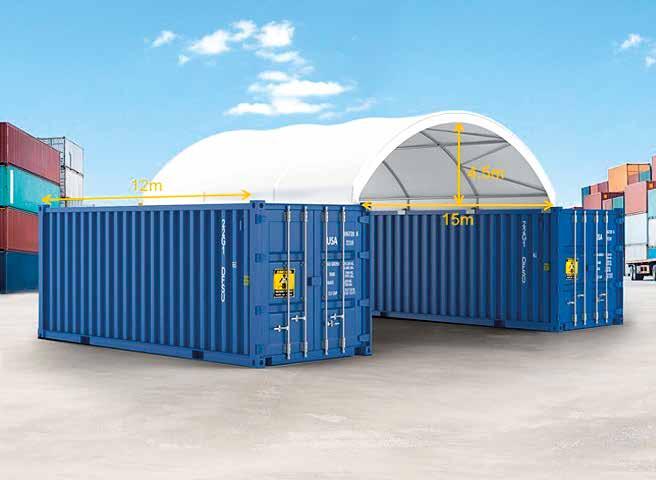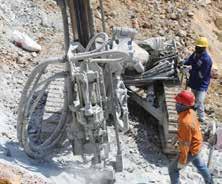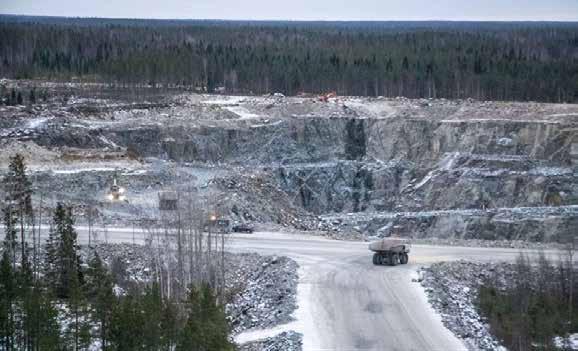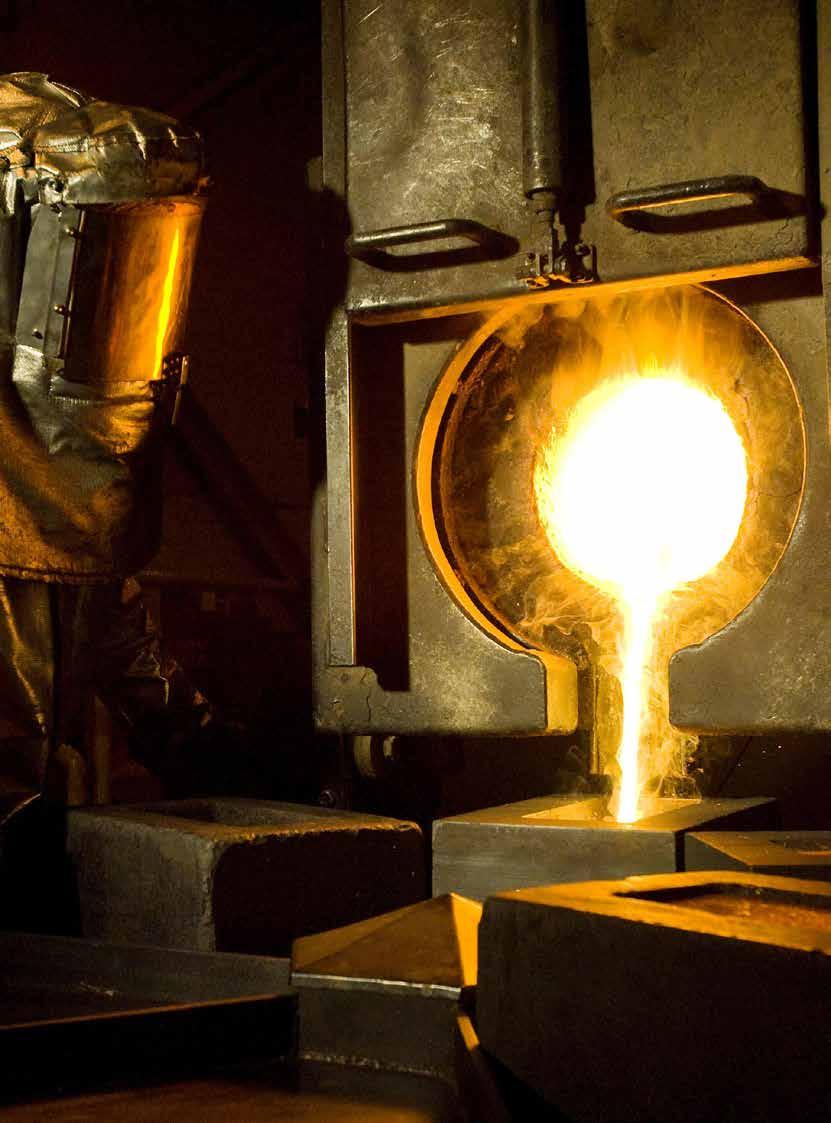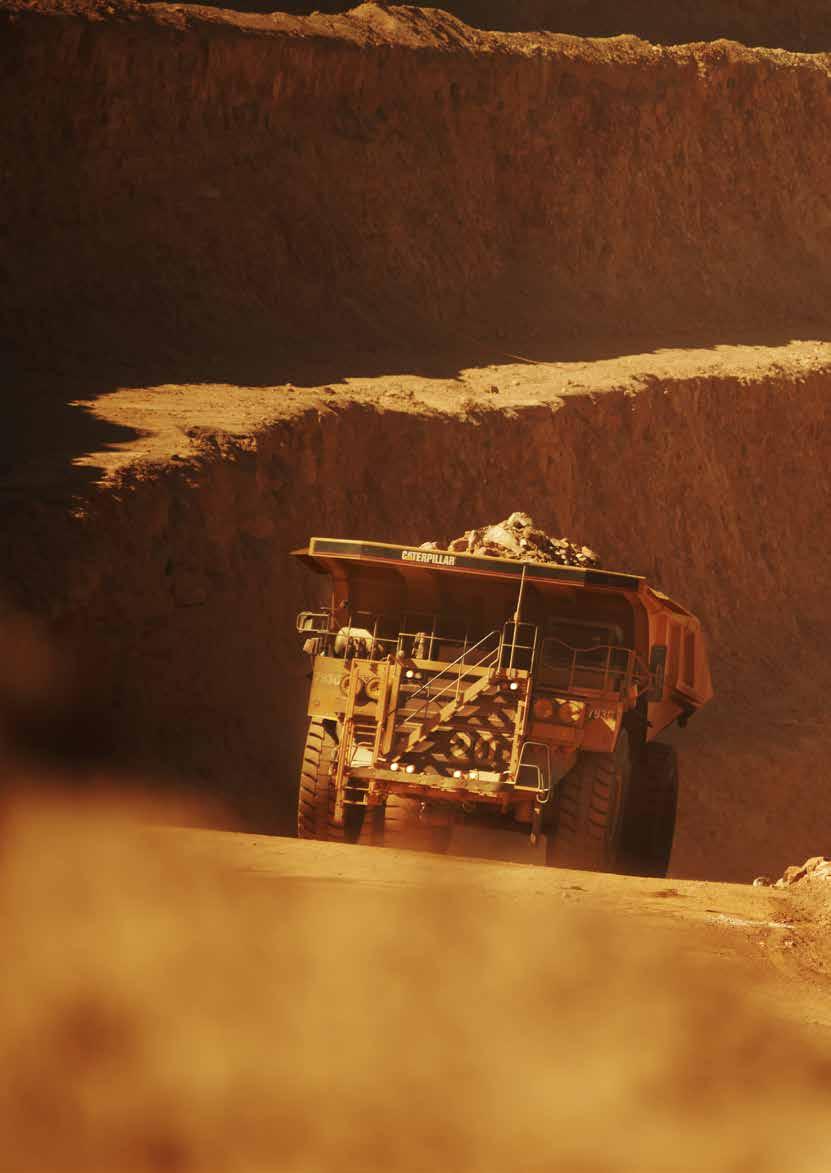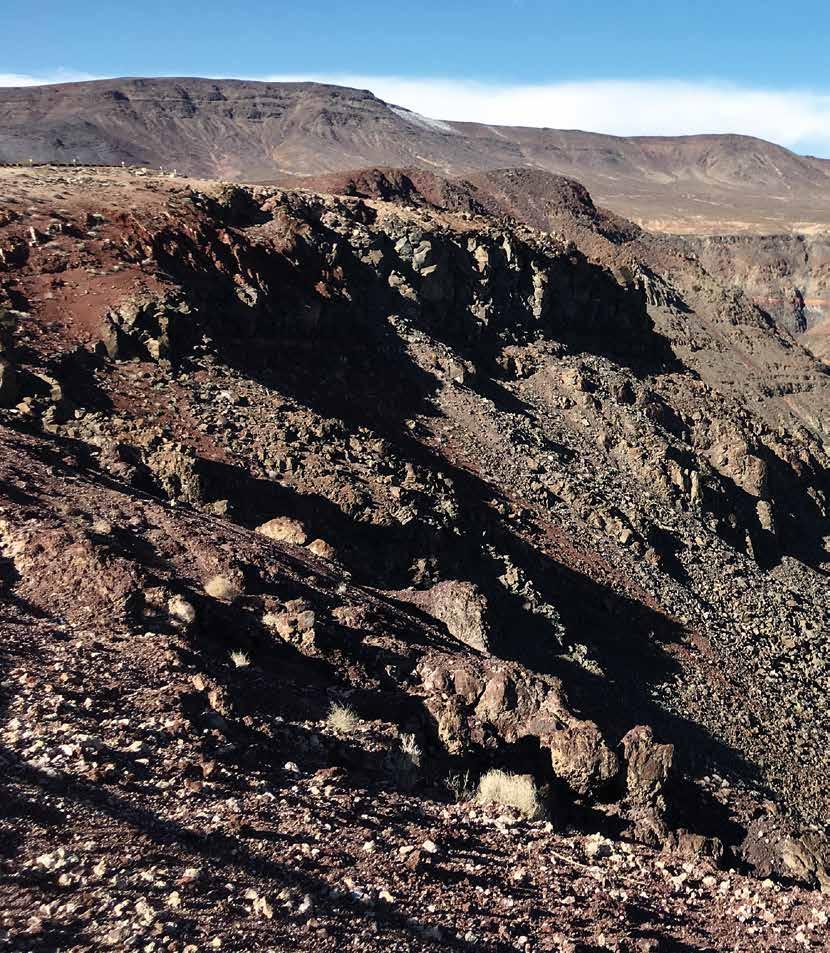
30 minute read
Coronet Metals US A revolution in mineral processing
Coronet Metals US
A revolution in mineral processing
Advertisement
Coronet Metals US Inc, and its subsidiary Avimetal, are
about to revolutionize the mineral processing sector with environmentally friendly mineral processing technologies such as ultra-fine micronization milling, electrostatic separation, cyclone electrowinning and hot and cold plasmas.

Coronet Metals US is a company on the cutting edge of dry concentration, milling and non-cyanide leaching processes that do not produce wastewater. Avimetal is a subsidiary company of Coronet Metals and is based in the United States, with a branch office in Korea that has developed a method for cleaning up cyanide and heavy metals such as cadmium and mercury from contaminated effluent.
For the past ten years, Avimetal has been conducting research
and development into the treatment of mining effluent and slags, and the findings show a variety of environmentally sustainable rare metal and precious nonferrous industrial metal cleaning and recovery procedures.
Avimetal’s environmentally friendly mineral processing technologies can revolutionise the worldwide mining industry, as the majority of alternative procedures rely on the use of large amounts of water and harmful chemicals.
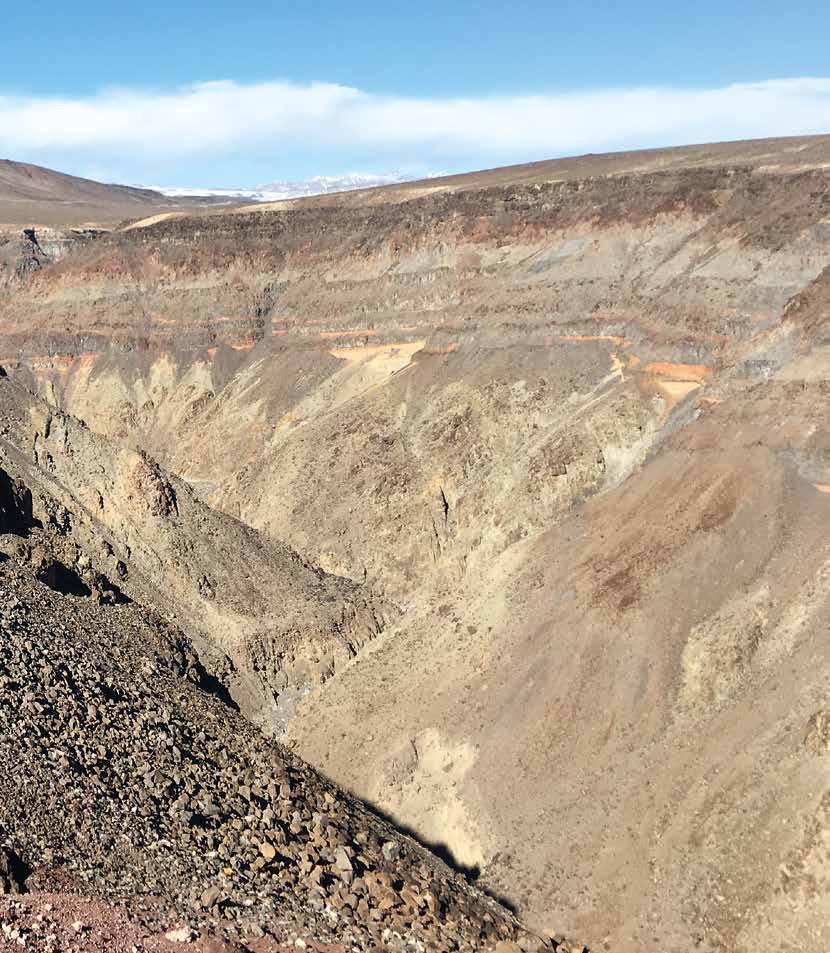
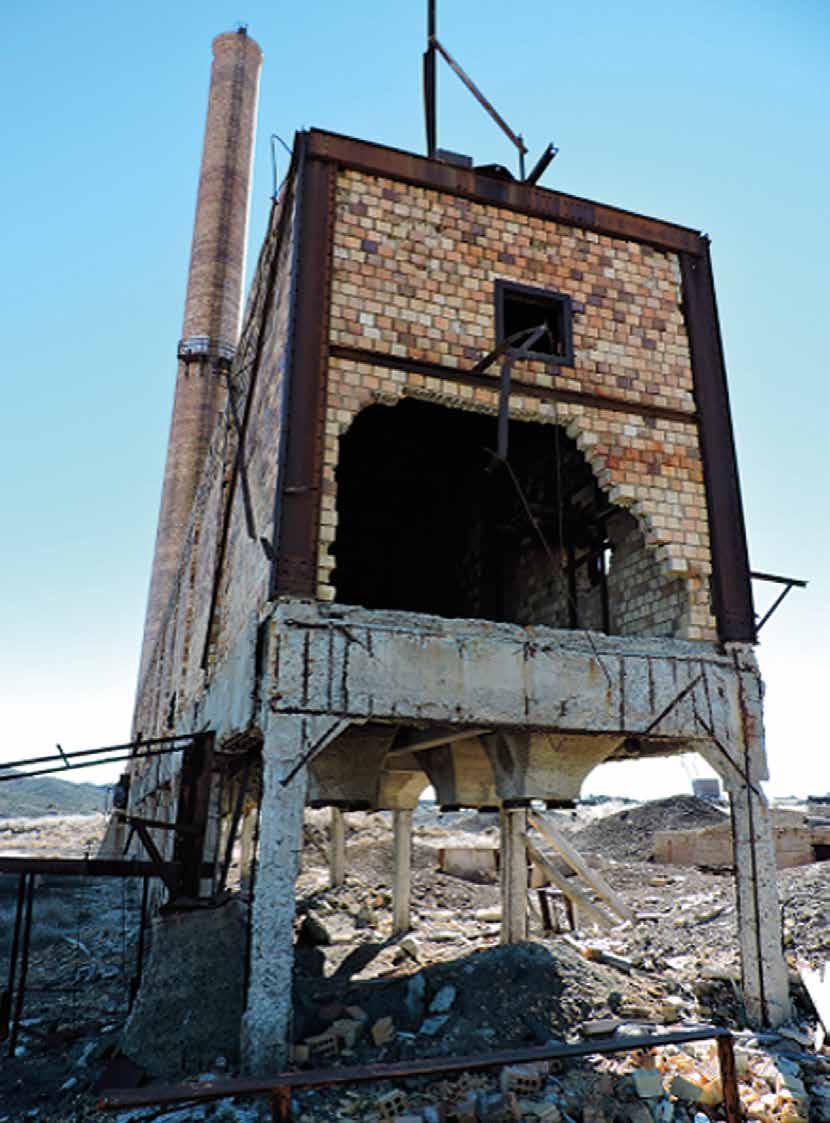
The mining sector has struggled to keep up with international market statistics, despite the industry’s impressive economic
A revolution in mineral processing
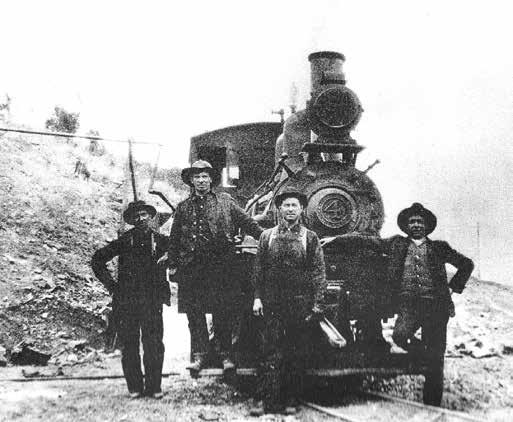
performance in recent years. After multiyear high profitability levels, underpinned by financially strong conditions, investors appear unable to invest at past price and dividend yield levels, resulting in existing investors being rewarded with a market price performance that is not comparable. Furthermore, our long-term analysis indicates that the mining industry will only see negligible market cap growth over the next 15 years.
However, long-term changes in the operational environment are generating concerns about the industry’s long-term viability. The influence of climate change, as seen by the increasing frequency and severity of extreme weather occurrences, is foremost among them.
The mining industry is strongly engaged in the climate change discussion as a source and supplier of carbon-based raw material such as coal, as well as a significant source of CO2 emissions via mining and metals processing.
The top 40 companies’ responses are diverse: some have implemented a climate change plan, while others appear to be unconcerned. The majority of capital investment is directed towards copper and battery metals, which are expected to benefit, as the energy supply diverts attention from internal combustion engines and toward electricity, especially renewable energy.
However, coal accounts for 38 per cent of worldwide energy generation. It is an essential part of the economy and has inspired significant capital expenditure and transaction attention.
Mining corporations are also reducing their operational portfolios by selling non-pivotal properties and adapting project portfolios to meet long-term objectives. Consolidation in the gold sector was a major focus of merger activity among the Top 40 in early 2019 and 2018. Potential acquirers must continue to evaluate their strategic choices before moving forward, but we may see more agreements to boost efficiencies and productivity.
Miners are in the public spotlight on the subject of carbon emissions, since they extract fossil fuels and consume a huge amount of energy. Any mistake increases the danger of damaging one’s reputation and adversely affects the whole industry’s social license to function.
Mining should therefore be among the first to adapt to the changing environment. While the top 40 miners are doing well in support of environmental monitoring, environmentalists have stated that disclosure alone is insufficient. Direct, quantifiable, demonstrable development is essential for trust to be established and sustained.
Miners have already made significant progress in improving operational efficiency in order to reduce groundwater usage and other environmental issues. By 2020, many of the top 40 have set a goal of reducing greenhouse gas emissions by 3% to 5%. While this is a welcome move, miners have not gone as far as their counterparts in other sectors.
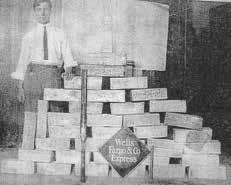
On 30 April 2021, Avimetal won contracts for $5 million USD for six environmentally-friendly mineral processing plants, with the first plant to be completed by the end of June in Unju, Korea – the world’s first truly environmentally sustainable mineral processing factory.
The Unju Mine was built during Japanese colonial administration in Korea. They chose to redevelop an abandoned mine in 1997, registering for a mining license in Jeonbuk Province in December of last year – which was rejected in January of this year for violating the Mountain Management Act. Residents of Yangchonmyeon, Nonsan City, near the Unju Mine, are protesting that “If the Unju Mine is redeveloped, not only will Topjeong Lake and Nonsan Stream – which are the feeding lines of Nonsan – be contaminated, but ecofriendly agricultural products such as strawberries and lettuce will also suffer great damage.” Nonsan City wrote a letter of command signed by Mayor Hwang MyungSeon recently, saying that “if the Unju Mine is developed, there is a concern that Nonsan’s agricultural base will be uprooted.”
Approximately 1 million tons of cyanide and cadmiumcontaminated effluent are currently present at the Unju Mine. Acidic water from the abandoned mine, polluting waterways, and neighbouring agricultural land may be contaminating tailing sediments and nearby places at the time of this writing. In general, once damage from mine contamination begins, it continues for a long period, and healing and restoration take a lot of time and money. Furthermore, many civil lawsuits have been filed over environmental damage. The government is currently carrying out duties on an annual basis as part of a national project to prevent soil and groundwater contamination from acid leachate and cyanides from the existing tailings dump.
Simon Korea will use Avimetal’s technology to clean up the million tons of tailings and expand the underground mine. Crushing, milling, drying, electrostatic concentration, leaching with NaCl, cyclone electrowinning system and a 100 per cent recycling wastewater system were all part of Avimetal’s plant design.
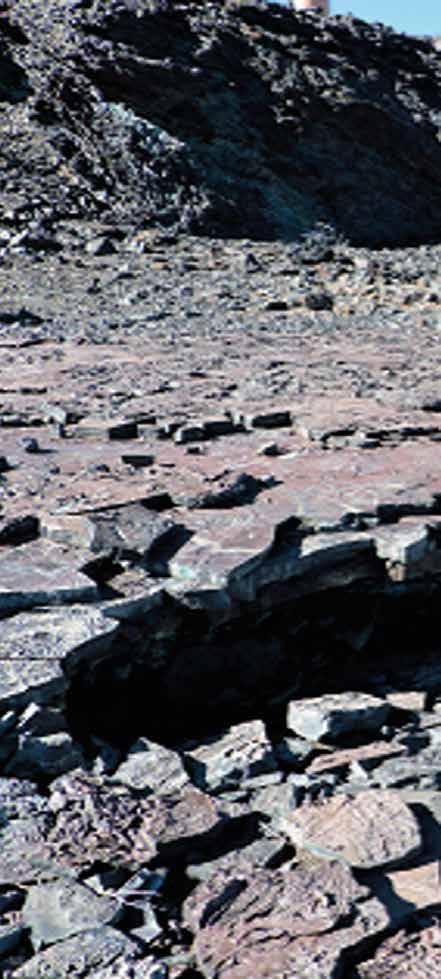
A revolution in mineral processing
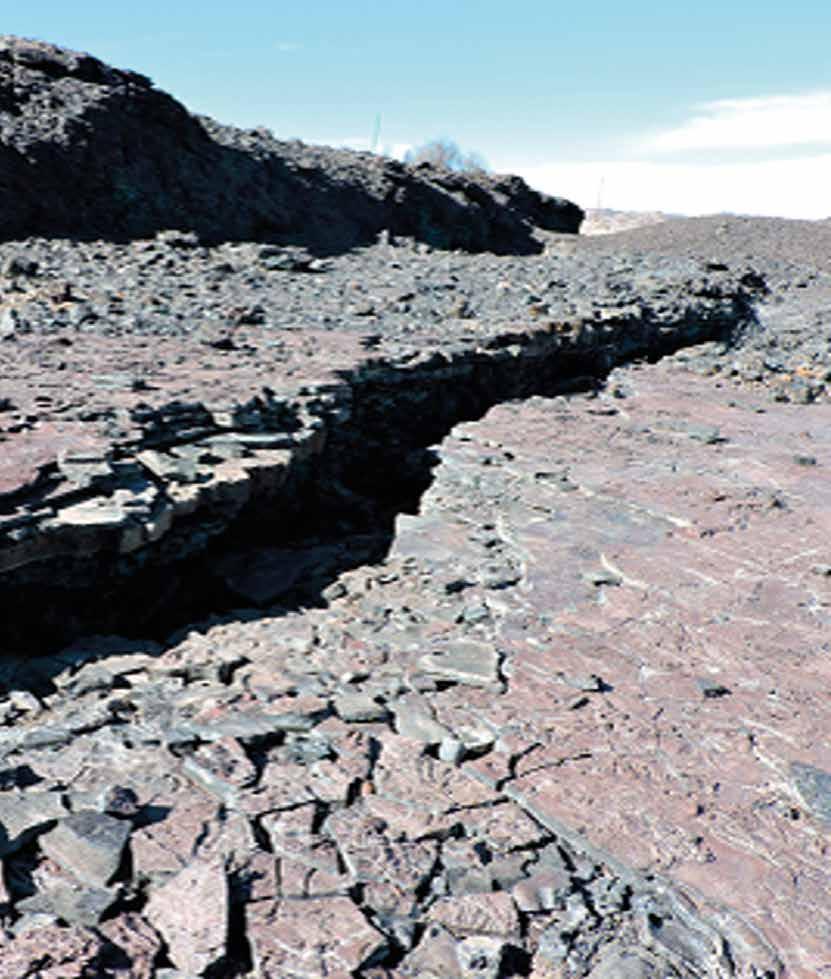
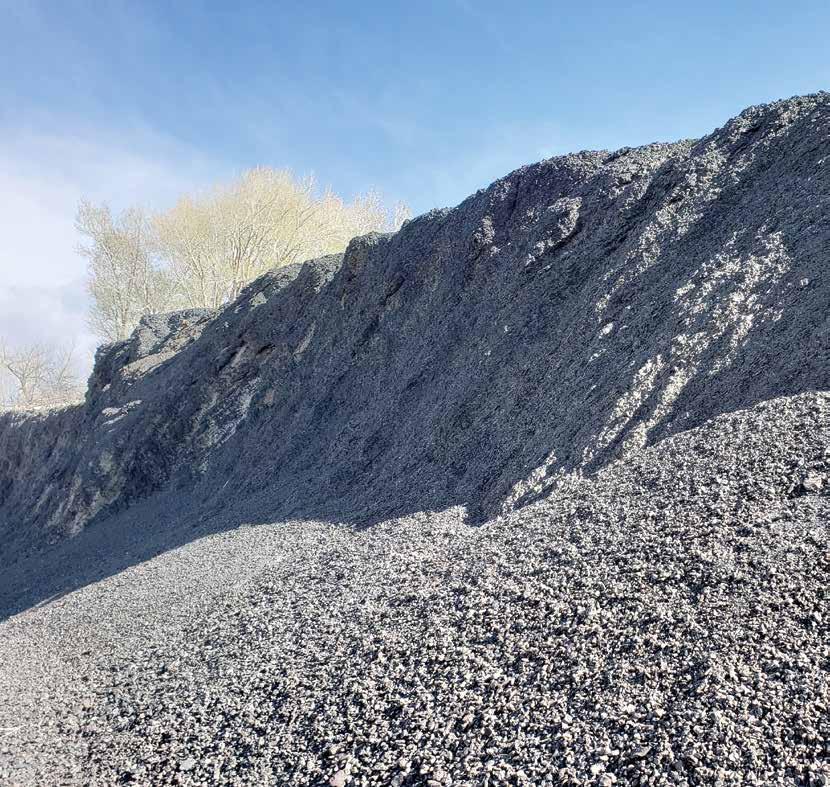
Beatty Dry Concentration Plant
Meanwhile, in the United States, the world’s first dry concentration plant utilizing revolutionary polymer graphene oriented electrostatic separation technology, invented by Avimetal CEO James Gim, has been built on 54 acres of property at Beatty, Nevada, purchased by Coronet Metals.
Beatty City is an unincorporated town in Nye County, Nevada, that was founded in October 1904 and is situated at the intersection of Highway 95 and State Route 374. Beatty has a wide array of land, water and scenic natural resources, important not just in terms of economics, aesthetics and enjoyment, but also in terms of land use monitoring and management.
Using technology licensed from Avimetal, Coronet Metals plans to clean up tailings and slags that have accumulated around this location and then continue to expand the underground mine. The facility was built by Avimetal, without the use of water or chemicals, and consists of crushing, milling, drying and electrostatic concentration.
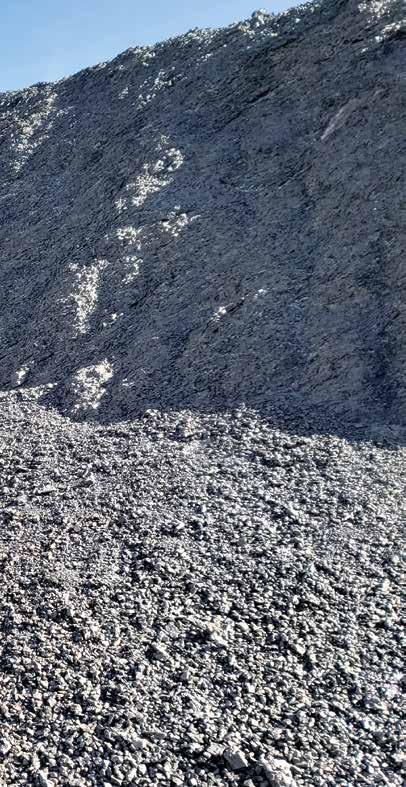
A revolution in mineral processing
Avimetal’s system replaces a ball mill or Raymond mill with a micronization milling system, which saves on electrical power, plant size and produces smaller particles of up to 400 to 600 mesh.
Coronet Metals has also relocated its head office from Valley Circle Center to South Eastern Las Vegas near Las Vegas Airport. The HQ office will support mining operations for Gold Bug Mines, AR and Orion Mine, Nevada. In the famous Gold Bug Mine region, Coronet Metals has signed a long-term
leasing agreement for the Lonesome Coyote Mine, Owl Hoot Mine, and Gold Casadei Mine.
Each mine is approximately 40 acres (15,000 square meters) and has several hundred thousand tonnes of tailings. There are several million tonnes of effluents on the surface of this 120-acre (480,000-square-metre) site. Coronet Metals intends to purify effluent by dry concentration using Avimetal’s electrostatic separation technology.
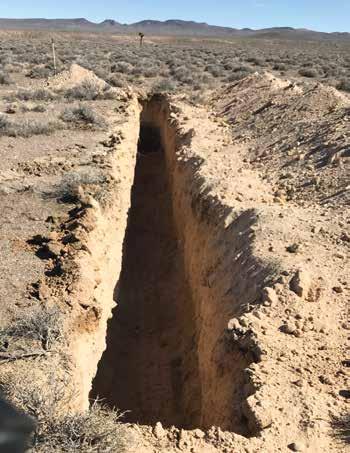
www.coronetpm.com

The Gold Bug Mine is located in an area with a long and colourful mining history in Arizona. The Gold Bug, for example, produced 50 tonnes of ore in 1895, averaging 43 ounces (1,333g) of gold per tonne. The Ivy Minerals Gold Bug Mine is located on White Hills Road west of Highway 93, four miles exactly west of Boulder Inn, which is 29 miles south of Boulder Dam on Hwy. 93.
The permittee of the site is allowed to use the vat leaching method to operate a closed-circuit non-disposal hydrometallurgical precious metal recovery plant. The infrastructure must be built and maintained in such a way that pollutants do not end up on the land surface or in the subsurface, posing a risk to the water quality in the area.
Coronet Metals has acquired the Orion placer mining claims in Esmeralda County, Nevada, in the Goldfield Mining District and plans to develop dry concentration at these mines. Physically, the mining claims are located along a stretch of land in the big wash drainage. The width of this water course varies from 400 feet to over 1,000 feet. Much of the mining district’s heart may be found in the headwaters. The proximity of Coronet Metal’s mines to the big wash zone was and still appears to be favourable for gold deposition. The Milltown Andesite and underlying rhyodacite include silicified and aluminized miocene rocks with high-grade gold pockets and, to a lesser degree, scattered mineralization. Ore can be found at depths of up to 1,000 feet. A total of five million ounces of gold have been extracted from there over the years. The mineralized rocks have been exposed for an unknown amount of time, although the bajada north of town is well developed and mature.
Big wash is currently 20 to 30 feet in diameter in the bajada. The wash is a well-developed network of twisted short-lived streams that erode the bajada’s top. Older sediments are being transformed by sheet wash from the west and southwest, which is extending
the wash in those directions. Tailings from previous mining operations have been washed into the drainage in recent years. Overall, erosion is surpassing the fresh sediment accumulation. The sediments are visible in both the wash’s walls and the current channel.
Boulders up to several feet in diameter have been found scattered among the silts and gravels in the area, indicating the force of flash flooding. These boulders are made up of rhyodacite that has been silicified and a lot of juvenile basalts, and probable source rock for the gold. All of the rocks in the wash are sub rounded to rounded, showing both rolling and refining of the bigger rocks by finer material swept over them. The sediments contain 1 to 2 percent magnetite, according to a magnet.
Small concentrations of magnetite or, more commonly, diffused magnetite, can be found in sediments. The low quantities suggest that the magnetitecontaining material has been processed. Fine gold is certainly present in these magnetite quantities. The district’s mafic rocks, such as andesite and basalt, provide magnetite.
The results of the tests point to a gold resource. The sediments are well-developed, with several excellent gold traps. Erosion involves reworking the sediments, which provides a concentration process for fine gold. There is also a magnetite resource that can be easily recovered via magnetic separation. The residual heavy mineral concentration can then be gravity separated after the magnetite has been removed. A track-mounted sonic drill rig is suggested for a preliminary examination of the resource. Three fences of holes running east-west across the claims should be enough to assess whether additional work is required.
For a total of 1,500 feet of fencing, each fence should have ten holes that are
A revolution in mineral processing
50 feet deep. Sediments will be gathered in 2½ foot bags. The depositional history and the location(s) of fine gold within the sediments are both preserved. The sediment deposition is documented by weighing and photographing the bags. Individual beds can be examined under a microscope to see whether or not there is any gold present. The gold is separated by gravity and the magnetite is separated by magnetic separation. The weight percentage can be used to establish the grade of each as shown in metallurgical reports list. At big wash north of Goldfield, there is great potential for a placer resource. A considerable resource can also be generated by combining magnetite collected and sold to a cement factory with a gold grade of at least 0.2 ounces per tonne.
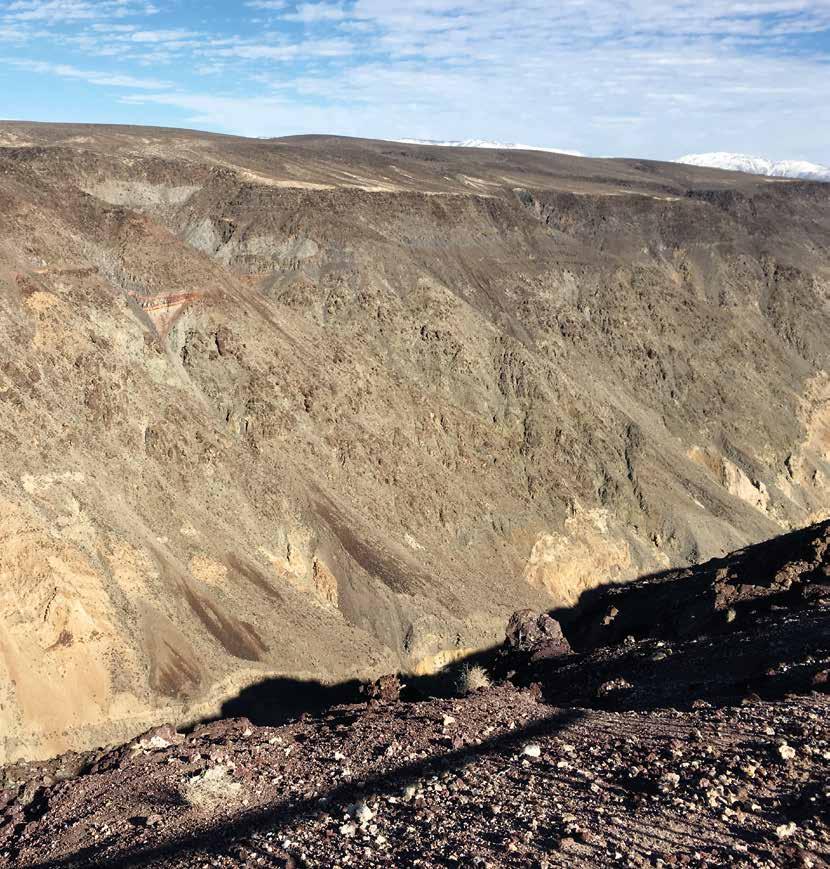

Since most gold particles are extremely minute (commonly referred to as a ‘micron silica cluster,’ because micron sized gold is contained by silica), fine particles are crucial in gold ore mineral processing. The smaller the particle, the greater the amount of gold recovered. The ultra-fine raptor mill is a new concept that allows fine grinding to extract minerals, including precious metals, more efficiently. The first steps in this process are crushing and milling.
Ultra-fine micronization milling is a patented, innovative and commercialized method for particle size reduction in order to reduce – within seconds – solids that are capable of fracturing into a particle-sized powder. It replaces the likes of a conventional ball mill, impact mill, hammer mill, Raymond mill, tower mill, etc.
An ultra-fine raptor works by means of a tornado/vortex airstream. With the help of a generated high-frequency air pressure fluctuation and a rotating impeller, the airstream transports the material into the mill’s spiral chamber. From there, the particles are distributed evenly into the milling chamber. The
A revolution in mineral processing
ultra-fine raptor mill can revolutionize the mineral processing industry because of its higher speed, efficiency, the economy of operation, and improved metal recovery.
The principle of triboelectricity (involving contact and/or friction) underpins Avimetal’s dry concentration. Electrostatic concentration has been employed in the mining sector for a long time, but its use has been restricted due to issues such as unit price, processing capacity and the inability to handle microscopic particles. Electrostatic separators are classified as gravity or electrostatic attraction. They both work in similar ways, but the forces that are delivered to the particles differ. High tension rollers and electrostatic separators are both electrodynamic separators.
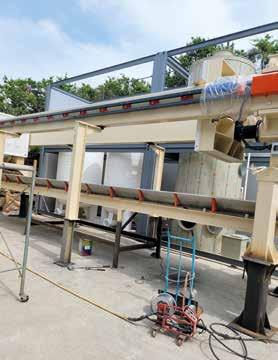
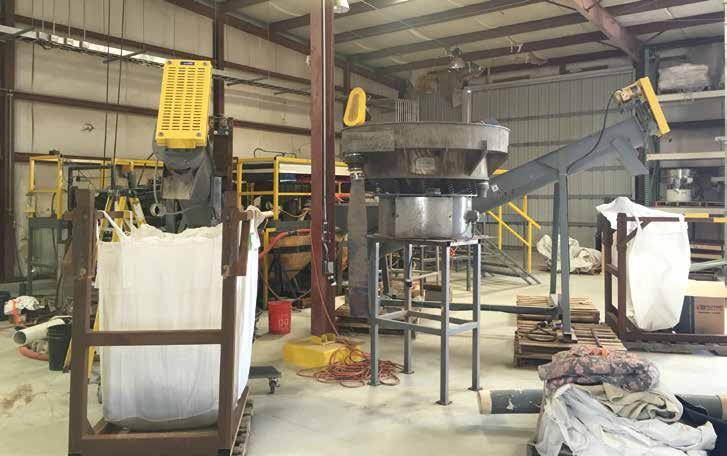
In the early 1900s, electrostatic separation became popular in mineral processing, until the advent of froth flotation. Since then, mineral processing has moved towards eco-sustainable processing techniques (ie, reducing the use of chemicals) and more recently, without the use of water. The electrostatic separation of minerals highlights the significance of a dry state.
Electrostatic separation is a process that uses electrostatic charges to separate crushed particles of material. These methods separate valuable minerals from gangues using differences in their electrical properties. Particles of different electrical charges or polarities are separated in an electric field because they follow different motion trajectories. This way, valuable material is separated from ore or slag.
In general, electrostatic separators are classified as electrodynamic (high tension) rollers and electrostatic plate separators. The chemical composition of the particle surface affects electron affinity, resulting in significant differential charging of materials in a mixture of discrete particles of diverse composition. The electrostatic plate separators work by passing a stream of particles past a charged anode. In high tension rollers, a corona discharge charges the particles that subsequently travel on a drum. The conducting particles lose their electrons to the drum and are then repelled from the drum; the drum attracts non-conducting particles. These separators have a low load capacity (less than a hundred kilograms per hour).
These are useful for particles between 75 and 250 microns, which does not aid the separation of minerals due to the size of the ore particles. For example, the Quadrant Roller Electrical Sorter is a significant piece of equipment in electrical mineral separation. The disadvantage of the roller type is a limitation for separating small particles. However, in 1989, Massachusetts Institute of Technology (MIT) developed a belt-type separator that works with triboelectricity (charge separation by friction). This separator works for micron-sized particles and has a large separation capacity of 5 tonnes per hour, but the unit cost is several million USD.
For this reason, Avimetal has developed low-cost electrostatic separators. The advantages of this system compared to our competitors are compact size, low sales price, the ability to separate micron-sized particles, large production capacity and low power usage. They also have several advantages over other mineral processing techniques due to their high efficiency, low capital and operating costs, no addition of chemicals and consequently, being environmentally friendly. Avimetal is a technology leader
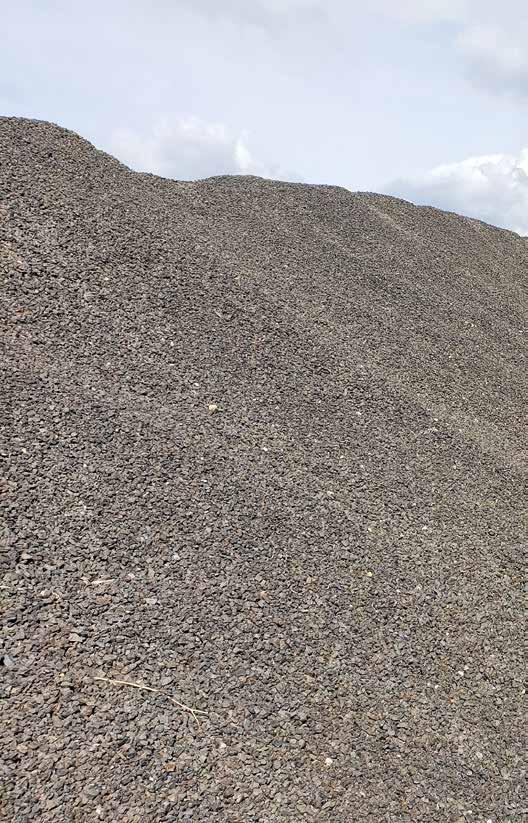
providing dry concentration, milling and non-cyanide leaching systems without wastewater generation.
Avimetal’s dry concentration technology was first successfully commercialized in Quilabamba, Peru, by Picchu Rio Gold Inc. The company’s mining permit had been suspended since 2012 as a result of mercury and cyanide poisoning of water downstream of the Amazon River. Picchu Rio Gold was granted a processing permit in 2018 after the Peruvian government approved an EPA (Environmental Protection Agency) rule permitting the use of Avimetal’s technology.
A revolution in mineral processing
www.coronetpm.com
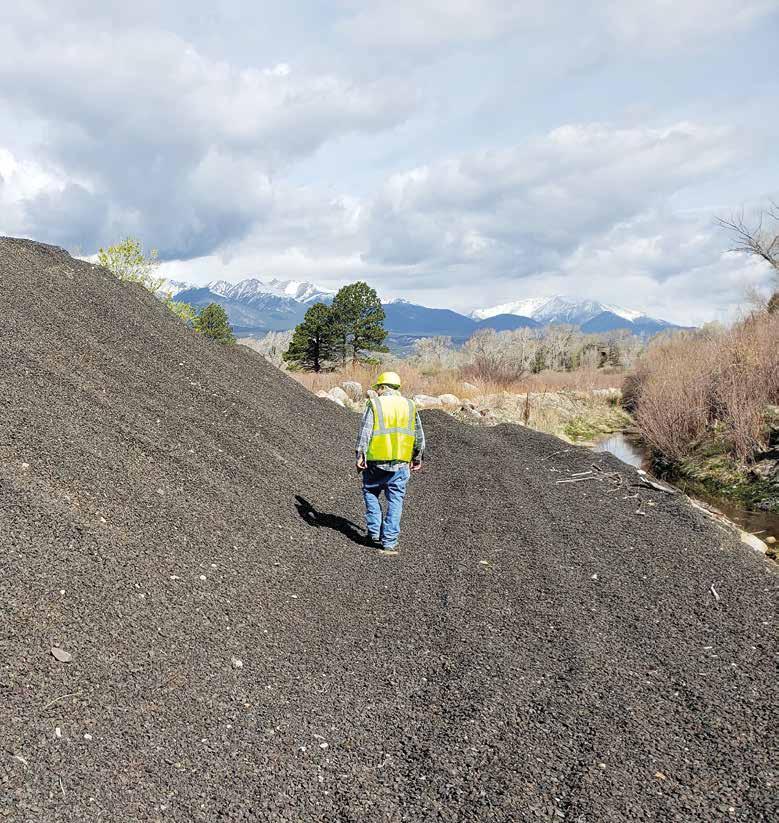
How Avimetal’s electrostatic separator works
Avimetal’s electrostatic separator works with triboelectricity and has four stages of graphene-coated anode and cathode plate pairs, vertically positioned, capable of treating five tonnes per hour. Graphene is a material with the advantages of superior conductivity and low costs. We also offer a full knock down (FKD) kit, with which the machine can be assembled in a few hours. Furthermore, the small size of the equipment saves on the cost of transportation.
Valuable and precious metals from dry concentrated materials can be further refined by cold plasma or hot plasma gasification, followed by NaCl (salt water) hypochlorite leaching and a cyclone electrowinning system, depending on the characteristics of the ore contents.
Electrostatic plate separators work by passing a stream of particles past a charged anode. Due to their induced attraction to the anode, the conductors lose electrons to the plate and are drawn away from the other particles. Other processes are limited in capacity because every particle must make contact with the drum or plate. The effectiveness of these contact charging processes is also limited to particles of about 100 μm or greater in size, due to the need to contact the grounded plate and the required particle flow dynamics. Due to inertial effects, particles of different sizes will have distinct flow dynamics, resulting in decreased separation.
Unlike other electrostatic separation techniques, Avimetal’s separator is well suited for the separation of very fine (one
micron) to moderately coarse materials with maximum throughputs. Triboelectric particle charging works with a variety of materials and simply requires particle-to-particle contact. Avimetal’s separator is distinguished by its tiny gap, high electric field, counter current flow, intense particle-particle agitation, self-cleaning action of the belt on the electrodes and being environmentally sustainable.
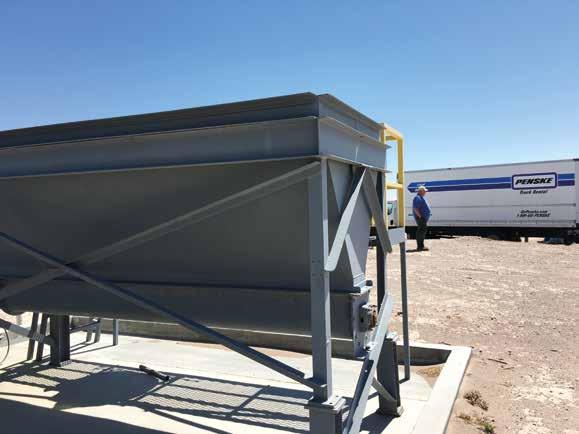

Cold Plasmas
A form of matter made up wholly or partially of ions and electrons is known as plasma (charged particles). A gas will disintegrate into atoms, positive ions and electrons when energy is applied to it. There are two types of plasma, thermal and non-thermal. All particles (electrons, ions, atoms and molecules) are in thermal equilibrium in thermal plasmas (which means the average kinetic energy is the same for all kinds). Thermal plasmas (also known as ‘hot plasmas’) have temperatures ranging from a few thousand to a few million degrees Kelvin. Atoms, positive ions and molecules have substantially lower kinetic energy than electrons in nonthermal plasmas, which are also termed ‘cold plasmas’.
In cold plasmas the temperature ranges from room temperature to a few hundred Kelvin. Cold plasma (CP) is a new technology that has captured the imagination of researchers all around the world. It was created to improve the printing and adhesive capabilities of polymers, as well as a number of electronic applications. Its uses have expanded in the recent decade as a potent instrument for non-thermal processing, with a variety of applications.
Cold plasma technology is widely used to manufacture semiconductors, printed circuit boards, magnetic media, special glasses, coating metals, and surface-treating some fabrics. A corona discharge can produce cold plasma by applying an electric field to the gas. This technology is ‘dry’, in the sense that it requires no solvents or other chemicals, only gases such as air, nitrogen, oxygen, argon or hydrogen. As a result, it is environmentally sustainable.
A revolutionary cold plasma device designed by Richard Woodford and James Gim is ready to be commercialized for metallurgical refining applications. When a DC-pulsed, electric power is delivered to a hydrogen-containing gas, it ionizes, resulting in various radicals. The hydrogen radicals formed in the molten metal react with the contaminants. When they reach the surface, they react with impurities containing sulphur, nitrogen or phosphorus to generate the volatile chemicals H2S, NH3, and PH3. These chemicals are transported away by the fluent gas since they are insoluble in the melts. As a result, the metal’s impurity elements are eliminated.
In a cold plasma device containing a reactor, a positive electrode, a negative electrode, a membrane and an agitator, the electrode is set up to produce cold plasma with a temperature range of 65 to 120 degrees Fahrenheit (18 to 49C, 291 to 322 K). We developed the membrane and electrodes ourselves. The metals are then removed with the use of an electrolyte containing NaCl and unique compounds. Different metals can then be recovered by adjusting the pH level.
A revolution in mineral processing
A revolutionary cold plasma device designed by Richard Woodford and James Gim is ready to be commercialized for metallurgical refining applications. When a DCpulsed, electric power is delivered to a hydrogencontaining gas, it ionizes, resulting in various radicals. The hydrogen radicals formed in the molten metal react with the contaminants


A revolution in mineral processing
Thermal plasma technology applications
The current global ecosystem of natural materials, energy and ecology requires the development of novel metallurgical technologies and equipment based on the use of thermal plasma as a concentrated heat source and for chemically active components of processes.
Thermal plasma in metallurgy is now evolving in two directions: improving traditional metallurgical technologies and developing mostly new plasma metallurgical technologies. Plasma technologies are typically categorized as smelting and reducing (extracting) processes, based on the breadth of their use. These methods are distinguished by the fact that the materials are finely powdered and, in most cases, subjected to partial reduction prior to processing.
The goal of all of the different plasma units is to provide a quick melting time for the raw material and a good contact (maximum area) between the reducing gas and the melted oxide material using diverse technologies. Plasma reduction technologies are characterized in general based on the kind of heat exchange between the plasma arc and the treated material, as well as the parameters under which the reduction processes are carried out.
Hot plasma has application in metallurgy, hazardous waste elimination, coating methods such as plasma spraying or chemical vapor deposition (CVD), the production of fine/nano powders, and energy generation. For the past decade, hot plasma technology has also aided in the recovery of value-added metals from slag or ore. However, the mining sector requires more cost-effective and efficient ore and slag concentration technologies, as well as precious metals processing technology. Consider that gold ore, slag, or other materials have a break-even point (BEP) of at least 0.2 ounces of gold per tonne.
Plasma gasification is another method that uses plasma to transform organic materials into synthetic gas and slag. An electric arc plasma torch ionizes the gas and transforms organic material to a synthetic gas, leaving a solid waste. The power is then generated using synthetic gas. Plasma gasification is a cost-effective method of generating electricity from municipal trash or biomass. Plasma plants, on the other hand, are considered costly and limited in capacity.
Avimetal has developed a costeffective, compact-sized RF Plasma Gasification System with outputs ranging from 120 to 960 kW that can be installed in parallel to improve capacity by combining several feeds and torches into a single system. It’s a turnkey modular system that’s easy to set up. Plasma furnaces, similar to plasma-arc furnaces, function in an ‘open bath’ to produce metals and alloys from natural and waste raw materials in industrial manufacturing. Industrial furnaces, in which the powdered material is injected around the heating surface of the resultant plasma cone, spin at a velocity of 50-1500 min around the furnace vertical axis at a 5-15° angle and with an arc length of 500-750 mm, are well known. According to the most recent statistics acquired from processing powder slimes and slags in a 2mW plasma furnace, specific energy consumption is 1300 kWh/t powder, and reducing agent consumption is 90300 kg depending on the kind of treated material.

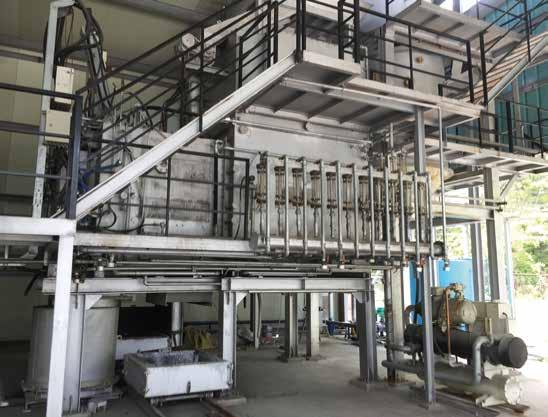

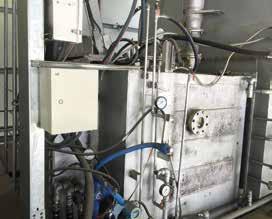
NaCl leaching refining system
The extraction of metals from effluent and low-grade ores is gaining popularity, due to the ever-increasing demand for metals, limited quantities of rich metal resources, mine depletion, and annual production of millions of tonnes of waste.
Significant amounts of essential and precious metals, such as cobalt, nickel, copper, zinc, gold and silver, can be found in mine tailings. For recycling the tailings, different hydro- and pyrometallurgical processes, as well as mineral processing technologies, have been investigated. In the extraction of gold from ores or secondary materials, cyanide is the most widely used leaching reagent. However, there are a number of drawbacks to using cyanide, including its high toxicity and low efficacy for carbon-based ores. Alternative cyanide-free reagents have been researched in the laboratory and on experimental or demonstration scales for these reasons, over the last few decades. Halogens, thiourea, thiosulfate, thiocyanate, ammonia, and glycine are among the alternative reagents for metal leaching.
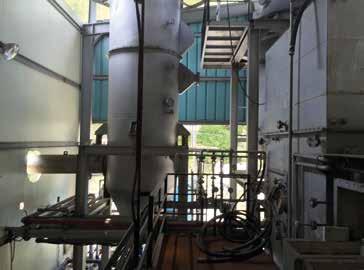
NaCl leaching is one of the most promising alternative processes because it is less toxic, has faster dissolving kinetics, has fewer gold passivation issues and is excellent at leaching refractory ores. To keep copper and/or iron soluble, chloride leaching is usually done at atmospheric pressure, at high temperatures, such as 65–95°C, and with an acidic pH of less than 3.
NaCl has been used as a gold leaching agent in direct gold processing, as a leaching media for gold-copper containing refractory copper concentrates, and as a leaching medium for other base metals in previous studies. As oxidizing agents, hypochlorous acid/hypochlorite ions, cupric ions (Cu2+), and ferric ions (Fe3+) have been used, whereas chloride in NaCl serves as a complexant, producing a complex with the dissolved gold complexing agent. Also, to oxidize cuprous ions into the divalent state, oxygen is used as an indirect oxidant.
The purpose of this method is to use sodium chloride (NaCl) leaching to extract copper and other metals from flotation by-products, as well as other precious metals. The influence of sodium and chloride ion concentrations on the solubility of gold, copper, nickel, cobalt, zinc, and iron has also been studied.
Electrowinning, also known as electroextraction, is the electrodeposition of metals from their ores after they have been dissolved in water by a process known as leaching. A new electrodeposition technology is cyclone electrodeposition, which has an obvious technical advantage in multi-metal purification and separation. It is commonly used to extract low concentrations of copper, gold, silver, cobalt, nickel, zinc and so on, in an acidic solution, including sulfuric acid, hydrochloric acid, nitric acid and cyanide.
Cyclone electrodeposition avoids the concentration polarization caused by the slow flow of an electrolyte, because of the relatively high-speed motion of the electrolyte and electrode. In the traditional electrodeposition process, the thickness of the diffusion layer reduces, and enhances the mass transfer while minimizing an ion exchange.
Electrowinning has been known for more than 200 years, and its use in the production of copper has increased dramatically in recent years. Anodes and cathodes are submerged in a solution containing metal ions in traditional electrowinning. Metal ions are reduced and deposited on the cathode, but this causes ions in the surrounding solution to deplete, slowing mass movement and deposition. As a result, extracting the majority of the metal from the solution is difficult, especially when the metal ion concentration is low. Turbulence in the medium is an important approach to increase mass transmission. Cyclones maintain a turbulent flow, allowing for rapid mass transfer. Traditional electrowinning requires recirculating the treated solution for further processing, but cyclone electrowinning technology is a straightforward, onestep approach for treating metal ion solutions.
The capacity to apply substantially larger current densities due to highly efficient mass transfer is a key benefit of cyclone electrowinning technology. Higher current densities result in a significant rise in the cathode production rate per square metre and cheaper capital expenses. Furthermore, the cyclone electrowinning equipment is extremely simple and has few mechanical components from an engineering point of view. It has a modular design that allows for easy installation, enlargement, and transportation.
The technology’s ability to maintain high current efficiency and product quality are also extensive. One of the technology’s fundamental properties is electrowinning of metals efficiently down to extremely low concentrations. Furthermore, the cell is enclosed and does not cause an acid fog problem, resulting in significant cost reductions in terms of construction and maintenance.
A revolution in mineral processing
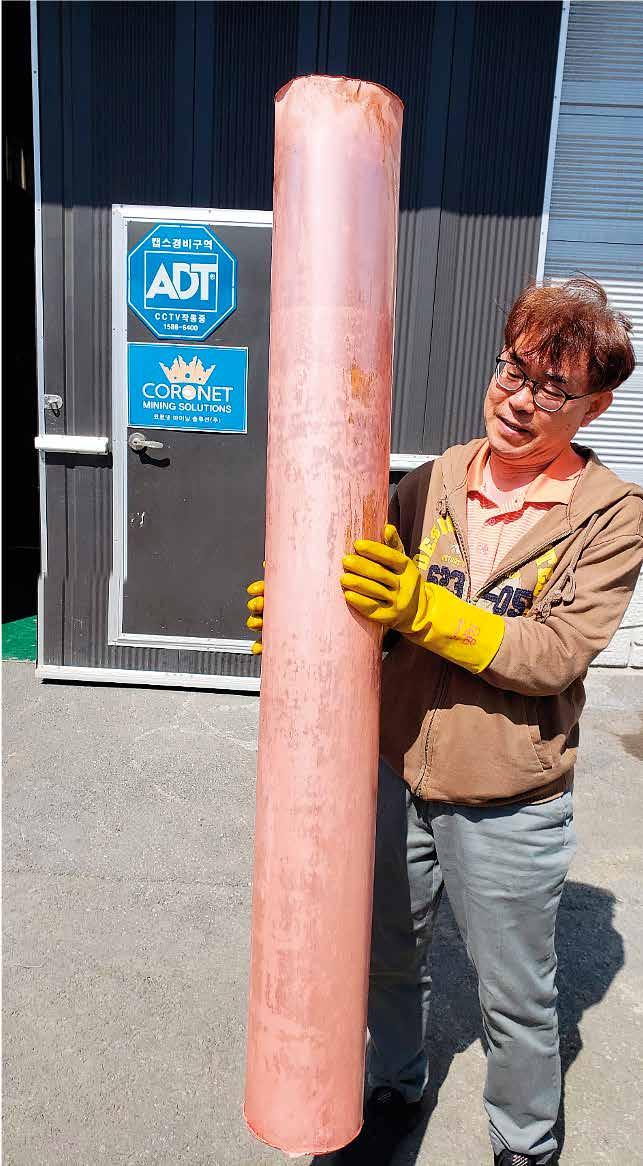
How cyclone electrowinning works
No additives are used, and electrowinning is usually done at room temperature. Also, the cyclone electrowinning cell is more tolerant to impurities than a normal cell. Its strong mass transport characteristics help to maximize target metal recovery while reducing coplating of other metals. Because of the confined form of the cell and the lack of a ‘water line’, it has a much higher tolerance for entrained organics and chlorides.
The cell does not have a lead-based anode in its conventional form, removing a potential source of product contamination. The electrowinning equipment has a modest capital cost, especially when compared to the magnitude of the operation. Only one cathode (Ti starting sheet) and our patented anode are used in a single cyclone electrowinning cell.
Our patented water turbine pumps the electrolyte into the cyclone electrowinning cell from the bottom, and it then flows through the cell at high speed in a turbulent flow. As a result, the Cu2+ concentration in electrolytes will drop, but copper deposits on the Ti cathode will increase. Oxygen will be created at the anode and released from the cell at the same time. In a separate system, the acid fog created during the process, is collected and treated. Deposits of around 70~75kg of copper per 23-hour cycle are finally obtained.

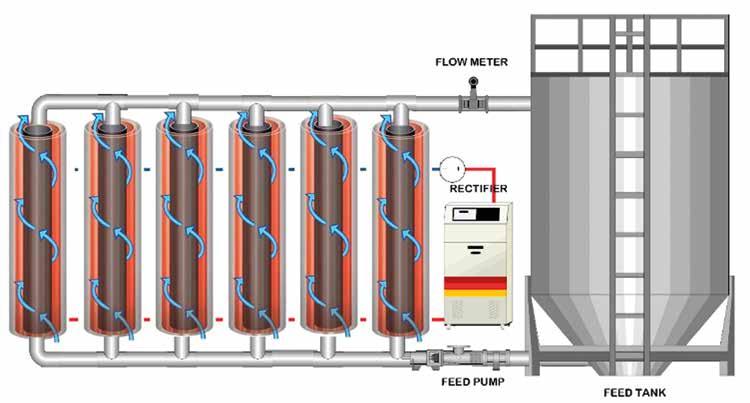
A revolution in mineral processing
Coronet Metals’ modular containerized structure
If you’re looking for a convenient and simple approach for a perfect short-term construction solution, look no further than a Coronet Metals containerized structure.
We are innovators in the design, manufacture and installation of high- quality, high-cube modular container frames that can be used as offices, healthcare facilities, schools, construction site workplace, overnight accommodation, shower and toilet facilities, etc.
These units are particularly well-suited to businesses involved in the mining, gas and oil industries, as well as public economic development. Employee accommodation is frequently required for remote mining sites, mineral and geophysical investigation, research centres, as well as other economic interests.
Modular containerized buildings from Coronet Metals US are a preferred solution for employee residential buildings or full remote camp facilities in certain circumstances, where access to housing is lacking or inadequate.
For several years, modular mineral processing facilities have been used in a wide range of industries. We’re employing a high-cube container frame of about 20-feet or 40-feet, with a height and width being 28 and 100 feet, respectively. The patented corner castings may be plugged into the bottom rail, post and cross structure by tightening bolts instead of welding. Pre-assembly parts can reduce the shipment volume to the facility. The processing machine will be housed within a container, double or triple stacked on site, taking only a few days to install.
The design and construction of a mining plant’s foundation is expensive and time consuming, especially in flat land like the deserts in Nevada, Arizona and New Mexico. From minor to major plants, the industrial revolution is the first container-based enclosure for the USA’s foremost dry concentration facility, being built near Beatty, Nevada.
The advantages of our containerized modular design are numerous, they are quickly manufactured, constructed and delivered to clients, whilst being safe, robust, eco-friendly and affordable.

